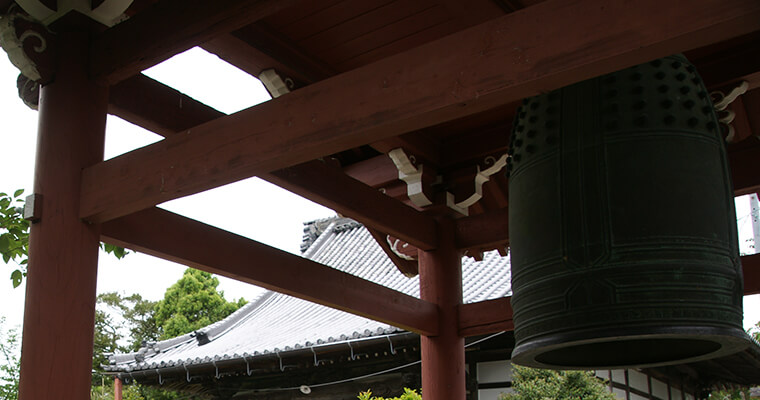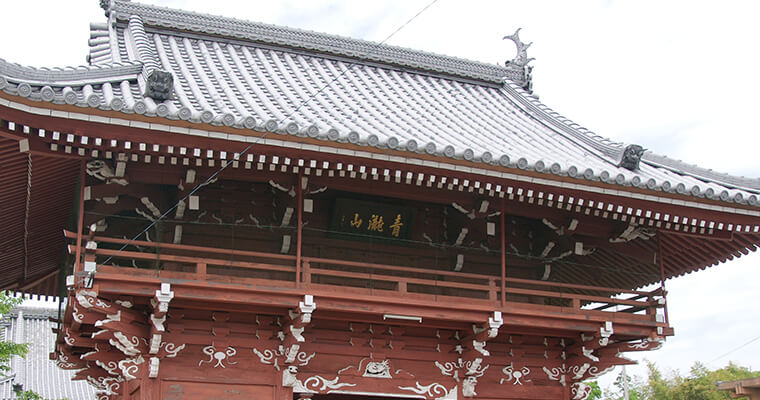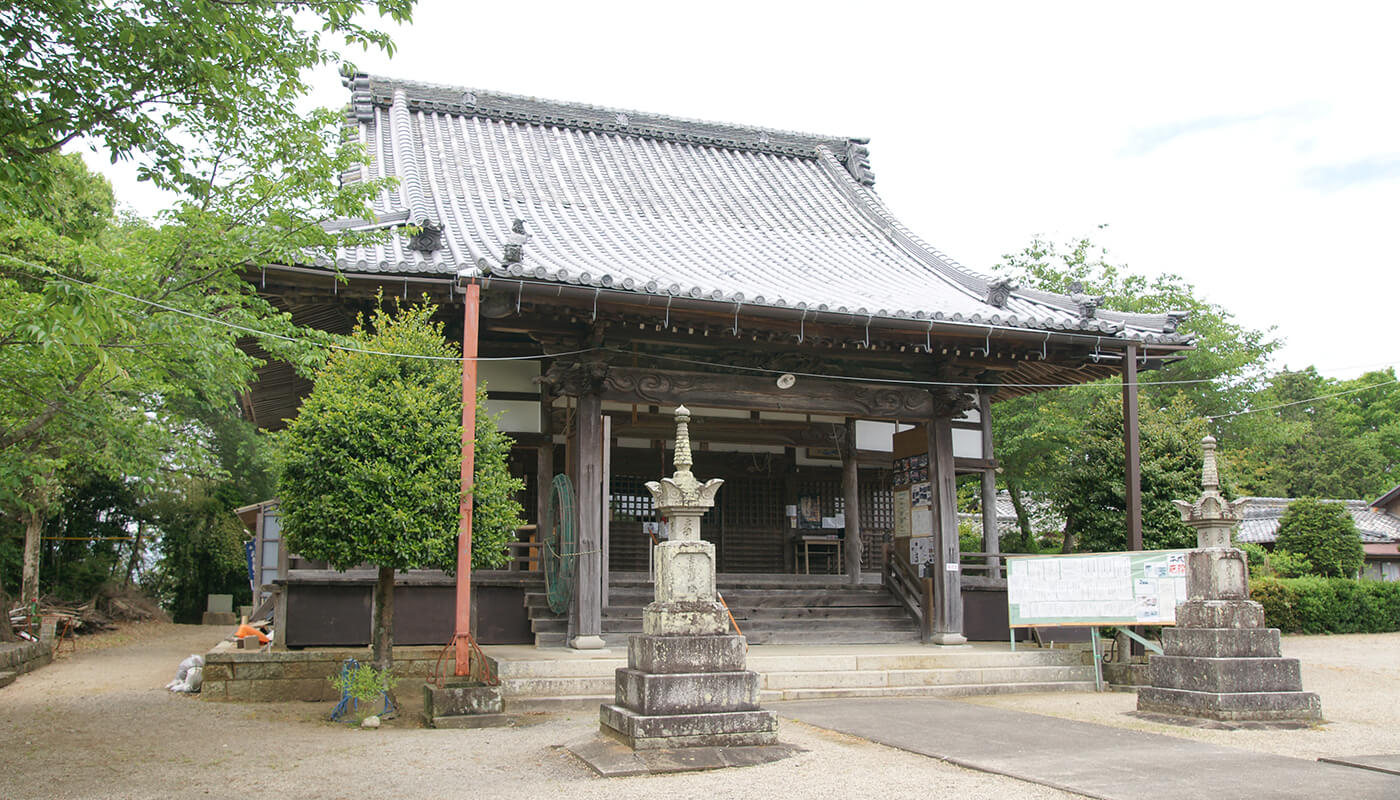Number 13Senju-in Kenmei-ji temple
History of the temple
Senju-in Kenmyō-ji is a temple number 1 of Ichishi district’s 33 Temples Pilgrimage and is commonly known as Kannon of Senju-in. It is directly connected to Enryaku-ji – the main temple of Sanmon branch of Tendai Buddhist sect. Senju-in Kenmyō-ji was founded in 730 by Gyōki (668-749), a famous monk who traveled around Japan to preach to commoners. The main statue enshrined in the temple is Senju Kannon (Thousand-Armed Kannon) carved by ancient Buddhist image maker Kasuga. This Senju Kannon is honorably called “Most Compassionate Savior”.
The temple flourished for more than 600 years until the battle of Kumozu river in 1338, when all buildings were burned down. In 1366 Kitabateke Akiyoshi (1326-1383), the provincial governor of Ise, rebuilt the Main Hall and other surrounding buildings as a proof of his deep religious devotion to Goddess Kannon enshrined in this temple. Since then Senju-in Kenmyō-ji became a prayer place for the next generations of Kitabatake clan and thanks to their patronage, the temple’s authority had also been restored.
200 years later during the times of Tenshō period (1573-1592) the temple suffered again. This time the buildings burned down during the fight between the troops of the first “Great Unifier” of Japan daimyo Oda Nobunaga (1534-1582) and local daimyo Kitabatake Tomonori (1528-1576). Luckily the main statue of the temple was left unharmed.
The complex was restored once again in the years between 1624 and 1644. The abbot of Senju-in Kenmyō-ji named Jitsujun rebuilt the burned buildings with donations and offerings received for his religious activity. In 1670 Tōdō Takamichi (1644-1697) became a daimyo of this land and as a proof of deep devotion to Goddess Kannon of Senju-in Kenmyō-ji, he decided to make this temple a prayer place for Tōdō clan and donate 100 koku (15t) of rice each year.
In 1719 a monk of this temple Chikū received and imperial order to pray to Goddess Kannon and ask for a child to be born to the Emperor Nakamikado (1702-1737). Chikū prayed eagerly and as a result of his religious practice a Prince (later know as Emperor Sakuramachi, 1720-1750) was born on New Year’s Day of the following year. A transcription of the Heart Sutra and a calligraphy written by Emperor Nakamikado himself were sent to the temple and offered at the altar. Emperor also added a poem:
I wish that the bamboo I planted for you will protect you for eternity.
Since that moment Senju-in Kenmyō-ji became a temple connected to the Emperor and was bestowed with a crest.
During the Meiji Restoration in 1868, which restored the actual power to the Emperor, all temple’s earnings were confiscated and almost all of the buildings including the Imperial Mausoleum, Imperial Quarters for Flower Viewing and Treasure Hall were destroyed. The temple fell into ruin and was left only with the Main Hall and the Main Gate. The current Main Hall of Senju-in Kenmyō-ji is a building rebuilt in 1917.

Outline
-
Honorific name
Seiryūzan
-
Temple's name
Kenmyō-ji
-
Sect
Tendai Sanmon branch
-
Religious service
Senju Kannon
(Thousand-Armed Kannon)

Details
-
Address
Mie Prefecture Tsu Hisai Motomachi 2059
-
Phone number
059-255-2312
-
Stamp place
Temple's counter
-
Opening hours
8:00 - 17:00
-
Official website




